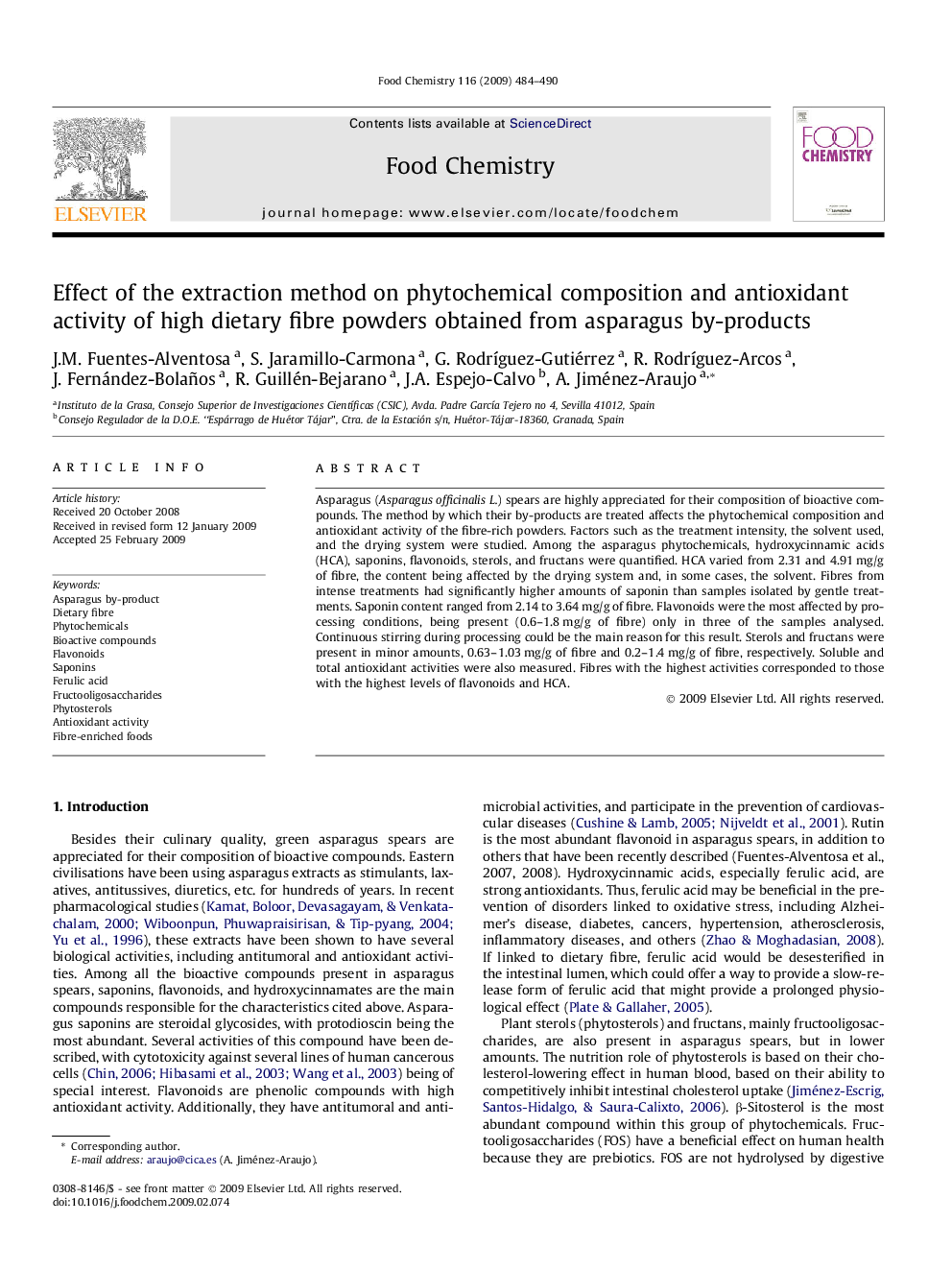| Article ID | Journal | Published Year | Pages | File Type |
|---|---|---|---|---|
| 1187694 | Food Chemistry | 2009 | 7 Pages |
Asparagus (Asparagus officinalis L.) spears are highly appreciated for their composition of bioactive compounds. The method by which their by-products are treated affects the phytochemical composition and antioxidant activity of the fibre-rich powders. Factors such as the treatment intensity, the solvent used, and the drying system were studied. Among the asparagus phytochemicals, hydroxycinnamic acids (HCA), saponins, flavonoids, sterols, and fructans were quantified. HCA varied from 2.31 and 4.91 mg/g of fibre, the content being affected by the drying system and, in some cases, the solvent. Fibres from intense treatments had significantly higher amounts of saponin than samples isolated by gentle treatments. Saponin content ranged from 2.14 to 3.64 mg/g of fibre. Flavonoids were the most affected by processing conditions, being present (0.6–1.8 mg/g of fibre) only in three of the samples analysed. Continuous stirring during processing could be the main reason for this result. Sterols and fructans were present in minor amounts, 0.63–1.03 mg/g of fibre and 0.2–1.4 mg/g of fibre, respectively. Soluble and total antioxidant activities were also measured. Fibres with the highest activities corresponded to those with the highest levels of flavonoids and HCA.
